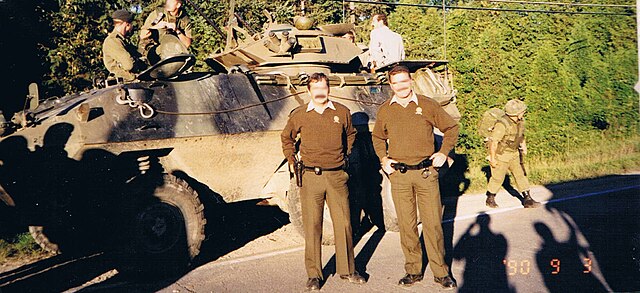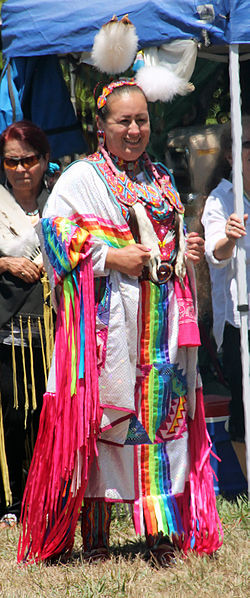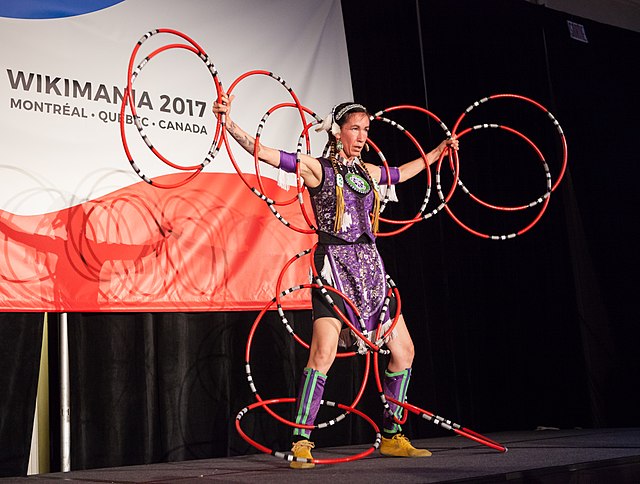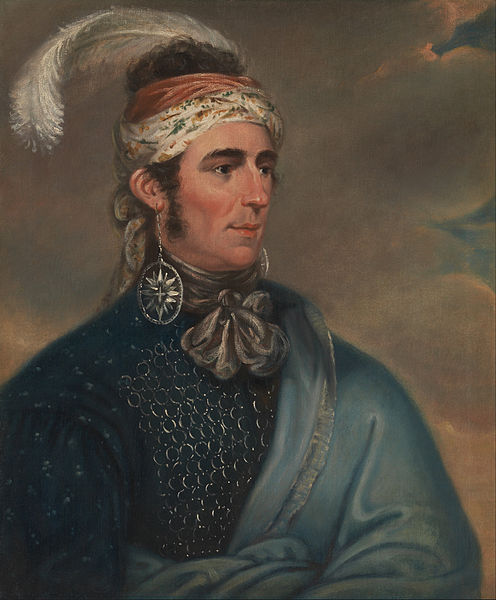The Oka Crisis, also known as the Kanehsatà:ke Resistance, was a land dispute between a group of Mohawk people and the town of Oka, Quebec, Canada, which began on July 11, 1990, and lasted 78 days until September 26, with two fatalities. The dispute was the first well-publicized violent conflict between First Nations and provincial governments in the late 20th century.
Members of the SQ 3 September 1990
Members of the Seton Lake Indian Band blockade the BC Rail line in support of Oka, while an RCMP officer looks on. Later in the day, several elders protesting were arrested, and a confrontation with the band community ensued as Mounties drove the cars holding those arrested through the reserve en route to Lillooet.
The Kanien'kehá:ka are in the easternmost section of the Haudenosaunee, or Iroquois Confederacy. They are an Iroquoian-speaking Indigenous people of North America, with communities in southeastern Canada and northern New York State, primarily around Lake Ontario and the St. Lawrence River. As one of the five original members of the Iroquois League, the Mohawk are known as the Keepers of the Eastern Door – the traditional guardians of the Iroquois Confederation against invasions from the east.
Thayendanegea or Joseph Brant, by Gilbert Stuart (1786)
Kanienʼkehá:ka dancer at a pow wow in 2015
Contemporary Quebec Kanienʼkehá꞉ka dance performance at Wikimania 2017
Teyoninhokovrawen (John Norton) played a prominent role in the War of 1812, leading Iroquois warriors from Grand River into battle against Americans. Norton was part Cherokee and part Scottish.






